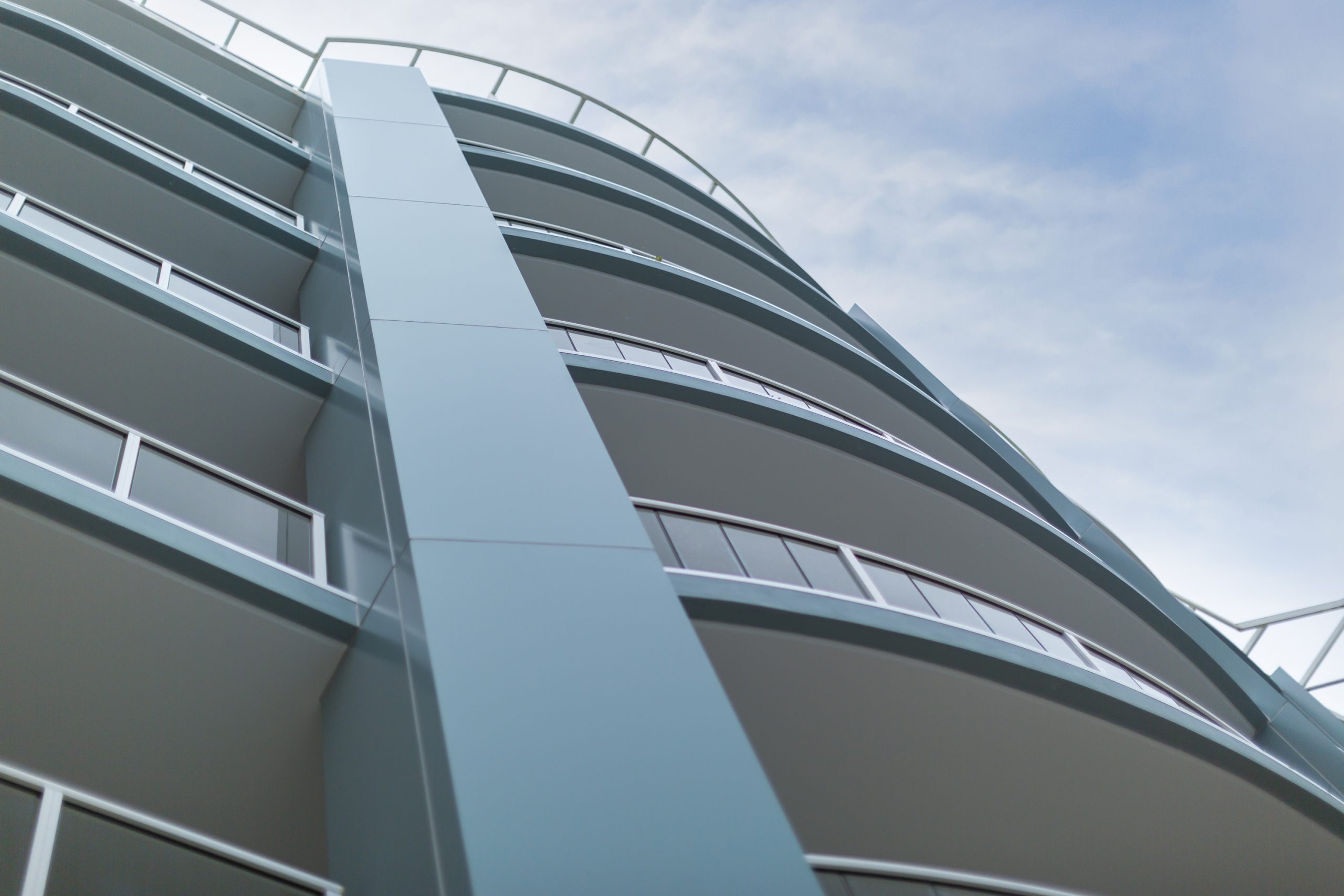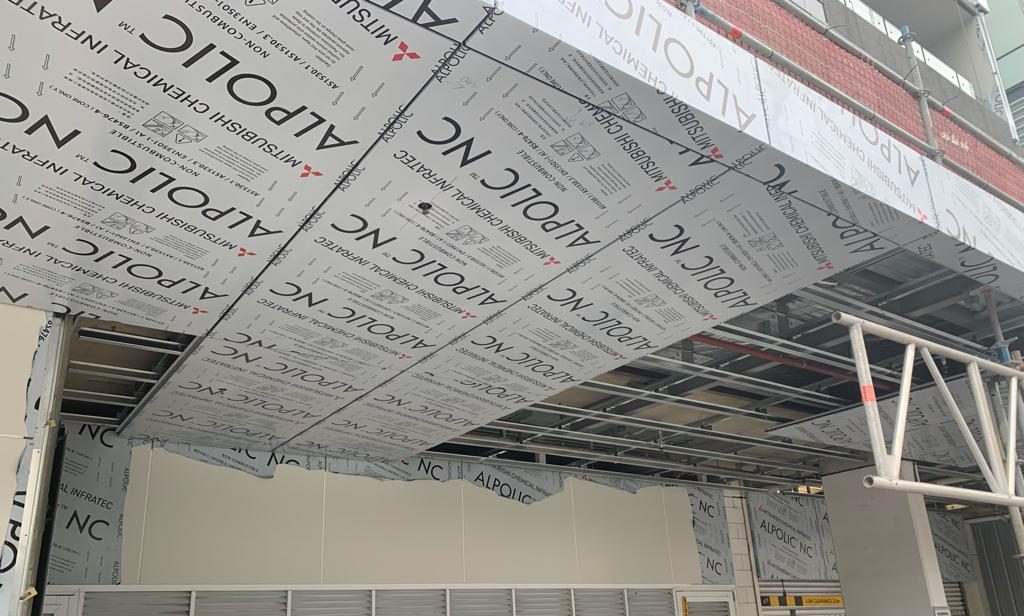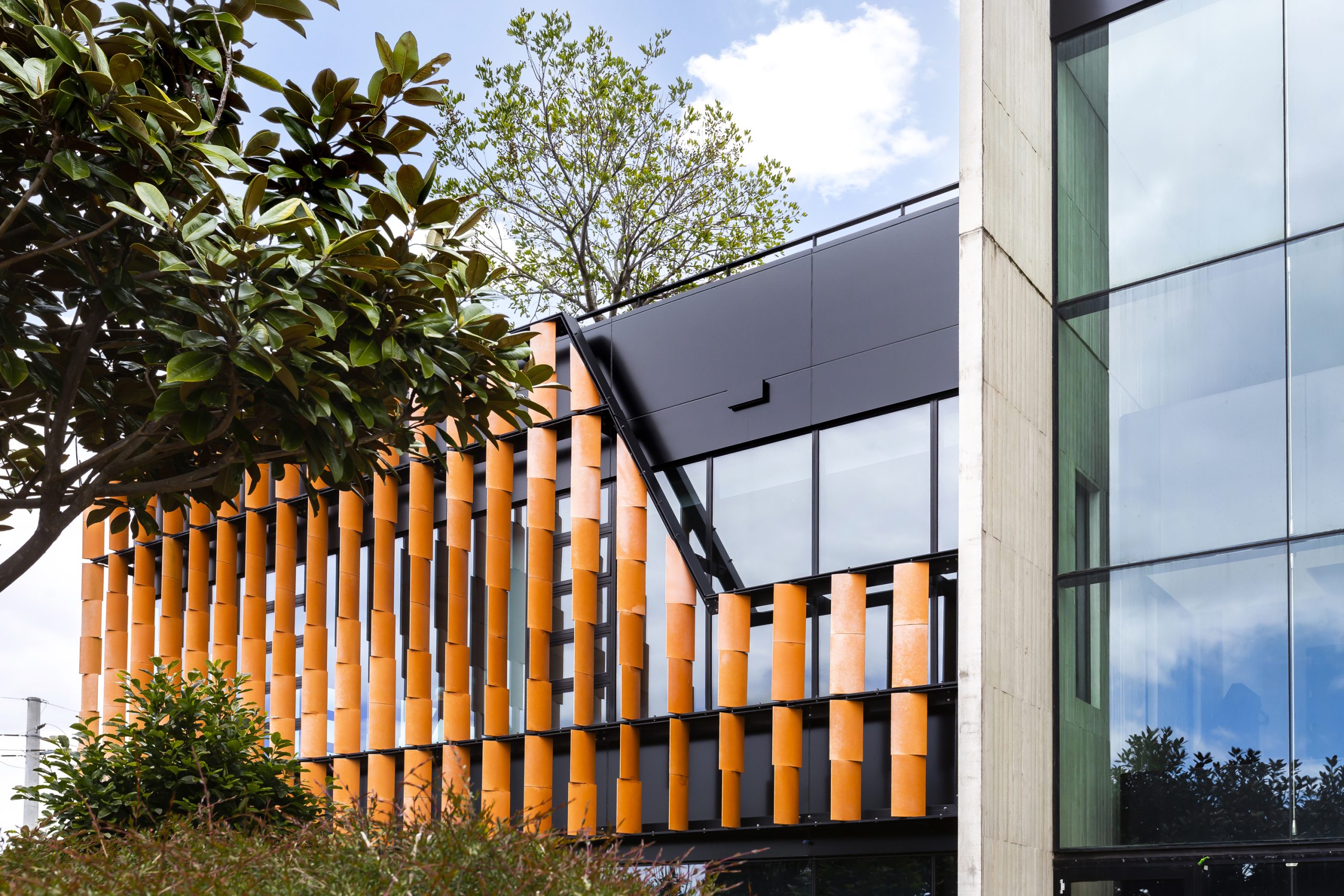
When ALPOLIC™ NC/A1 was released in Australia four years ago, it immediately became a game changer in the non-combustible cladding space. Designed and manufactured specifically for the Australian market by ALPOLIC™ by Mitsubishi Chemical Infratec Co., Ltd in close collaboration with Network Architectural, the product set new standards when it comes to quality and life expectancy, as well as fire safety and compliance with Australian building codes and regulations. And then, of course, there is the unmatched, industry-defining warranty that comes with ALPOLIC™ NC/A1. What makes the warranty so unique?
“Firstly, it is a manufacturer warranty,” explains Llewellyn Regler, National Technical Manager. “Many facade companies will say they have a manufacturer warranty, but in reality offer a supplier warranty. This warranty, on the other hand, is a 20-year full cover warranty from ALPOLIC™ by Mitsubishi Chemical Infratec Co., Ltd, a globally renowned manufacturer.” Llewellyn adds that if anything happens to the panel – and the manufacturer is at fault – ALPOLIC™ by Mitsubishi Chemical Infratec Co., Ltd will cover rectification costs, including access and labour, at no extra cost to the building owner. “Again, this is what makes this warranty unique – in the case of many other companies on the market, the cover is for the panel only, and the building owner often has to cover the cost of the replacement. But ALPOLIC™ NC/A1 is the only aluminium facade product in Australia to come standard with a 20-year full replacement warranty that covers material, labour and rectification costs for faulty material that is backed by the manufacturer. This is a huge change to the way the industry now needs to look at warranties.”

While these qualities certainly set ALPOLIC™ NC/A1’s warranty apart from others in the market, this cover is also consequential when it comes to sustainability outcomes. As Llewellyn explains, it’s to do with maintenance requirements – or rather, the lack of.
“As best practice, recommends that the panels get cleaned once a year,” he says. “And this could be as simple as rain falling on the panels. However, you don’t need to wash them down in order to maintain the warranty.” Llewellyn notes that that’s not always the case with other suppliers. “In case of other products – specifically PVDF-coated materials – the warranty is directly connected to maintenance, and in order to maintain the cover, the facade has to be cleaned once or twice a year. In fact, most warranties will insist on keeping records of cleaning and maintenance procedures for the life of the warranty. If that’s not done, it can actually void it.”
It is this requirement for regular maintenance that can impact the embodied carbon of the building. Llewellyn explains that the Good Environmental Choice Australia (GECA) – Australia’s only independent sustainability and environmental certification program – is currently reviewing the notion of embodied carbon from warranty perspective; both from cradle to grave, and lifecycle and maintenance point of view. “What it means in practice is that if a building owner needs someone to come out and wash the facade down one or two times a year, that has to be built into the embodied carbon of the product. With ALPOLIC™ NC/A1, we don’t have to do that.”
Llewellyn adds that keeping embodied carbon as low as possible – helping architects, designers and specifiers achieve their desired sustainability ratings – is crucial. “The ALPOLIC™ NC/A1 comes with an Environmental Product Declaration (EPD) produced by GECA and can contribute towards Green Star points for the building,” he explains. “So if you’re looking at sustainable facades, then we’re certainly at the top of that list.”
In addition, ALPOLIC™ NC/A1 has a staggering life expectancy of 50 years. “With ALPOLIC™’s Lumiflon FEVE coating technology and rigorous testing we’re confident that it is one of the most durable, high-quality cladding materials on the market,” Llewellyn ensures.

Coupled with the 20-year full cover from a trusted manufacturer and lack of a required maintenance schedule that could increase embodied carbon, this cladding solution has no match where safe, non-combustible sustainable facade products are concerned. And, of course, there is a substantial value-add from cost perspective – specifying a product that is durable, doesn’t have to be maintained or replaced makes for a good financial decision, too.
“The architects are really driving this ambition to put forward products that are designed to last and perform for a really long time,” Llewellyn adds. “At the end of the day, that makes them both more sustainable and cost-effective.”